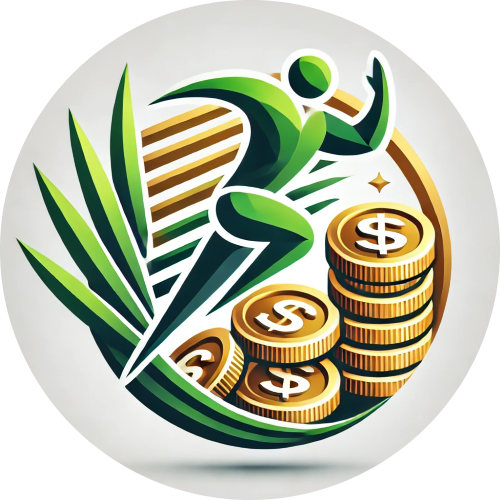
A ketogenic diet for weight loss has gained immense popularity, with countless success stories of people shedding pounds and improving their overall health. If you’ve decided to give keto a try, you might wonder: how do you start a ketogenic diet for weight loss?
Starting any diet can be challenging, but many find that transitioning to keto is particularly demanding. The reason? A ketogenic diet requires eliminating high-carb staples like toast, cereals, pasta, and pizza—foods many of us rely on daily.
This guide will provide clear steps to ease into keto and tips to help you succeed.
What is a Ketogenic Diet?
The ketogenic diet, or “keto” for short, revolves around eating high-fat, low-carb, and moderate-protein foods.
Unlike the Atkins diet, keto strictly limits carbohydrates throughout the diet rather than just in the initial phase. This low-carb intake forces your body to shift its fuel source from glucose to fats, producing ketones for energy.
A typical ketogenic diet includes:
- Fats: 75% of daily calories
- Proteins: 20% of daily calories
- Carbohydrates: 5% of daily calories
This dramatic shift in macronutrients alters how your body functions, making fat your primary fuel source.
How a Ketogenic Diet Works
Under normal circumstances, your body burns carbohydrates for energy. Carbs are broken down into glucose, with excess stored as glycogen in the liver. On a ketogenic diet, the lack of carbohydrates prompts your body to burn fat instead, producing ketones to fuel your cells.
By teaching your body to rely on fat for energy, you can:
- Burn stored fat more efficiently
- Regulate blood sugar levels
- Reduce hunger and cravings
What You Need to Know Before Starting
Success on the ketogenic diet requires more than just dietary changes. Your mindset is crucial.
Ask yourself:
- Why do I want to start keto?
- How long am I willing to commit to this lifestyle?

Having a clear purpose—whether it’s weight loss, improved health, or both—will help you stay motivated. Keep in mind that keto is not a quick fix but a tool to help you achieve sustainable results.
How to Start a Ketogenic Diet
Here’s a practical, step-by-step guide to help you start your keto journey:
- Plan Ahead
- Set a Start Date: Choose a week when your schedule is light, and you won’t have food-related social obligations.
- Communicate Your Goals: Let your family and friends know about your decision and ask for their support to minimize temptations and distractions.
- Prepare Mentally: Read about the challenges and benefits of keto to align your expectations and stay motivated.
-
Purge and Restock Your Kitchen
- Remove Temptations: Discard or donate high-carb foods like bread, pasta, rice, sweets, and sugary snacks.
- Stock Up on Keto Staples: Purchase keto-friendly foods such as fatty fish, eggs, avocados, nuts, seeds, and low-carb vegetables. Make sure you have healthy oils like olive oil, coconut oil, and ghee on hand.
- Plan Your Meals: Create a week’s worth of meal plans to avoid last-minute decisions that could derail your progress.

-
Gradually Reduce Carbs
- Step Down Slowly: If you’re used to consuming 200-300 grams of carbs daily, reduce intake over several days to avoid withdrawal symptoms.
- Swap High-Carb Foods: Replace starchy sides like potatoes and rice with cauliflower rice or zucchini noodles. Choose berries instead of bananas for desserts.
- Track Your Intake: Use apps or food journals to monitor your carb, fat, and protein ratios.
-
Prioritize Protein and Fats
- Start Your Day Right: Begin with a high-protein breakfast like scrambled eggs with avocado or a keto smoothie with spinach, unsweetened almond milk, and protein powder.
- Introduce Fats Gradually: Start adding fats like olive oil, coconut oil, and butter to meals incrementally to avoid digestive discomfort.
- Choose Quality Sources: Focus on healthy fats from whole foods and avoid processed options or trans fats.
-
Stay Hydrated and Electrolyte-Balanced
- Drink More Water: Aim for at least 8-10 glasses of water daily to combat dehydration, a common issue during the keto transition.
- Replenish Electrolytes: Add a pinch of Himalayan salt to water or consume bone broth to restore sodium, magnesium, and potassium levels.
- Avoid Sugary Drinks: Stick to water, herbal teas, or unsweetened beverages.
-
Incorporate Light Exercise
- Start Small: Begin with 20-30 minutes of walking, stretching, or yoga to stay active without overexerting your body.
- Add Strength Training: Gradually include resistance exercises to build muscle and enhance fat burning.
- Be Patient: Energy levels may dip initially, so listen to your body and adjust workouts accordingly.

-
Experiment with Intermittent Fasting
- Choose Your Window: Skip one meal daily or follow an eating window such as 16:8 (fast for 16 hours, eat within 8 hours).
- Focus on Hydration: Drink water, black coffee, or herbal teas during fasting periods to stay hydrated and curb hunger.
- Combine Strategies: Use intermittent fasting to enter ketosis faster and simplify meal planning.
-
Track Your Progress
- Monitor Ketones: Use a blood-prick meter or urine strips to measure ketone levels and confirm ketosis.
- Keep a Journal: Record your energy levels, mood, and physical changes to track progress and identify patterns.
- Adjust as Needed: If progress stalls, tweak your macro ratios or consult a professional.
What Can You Eat on a Ketogenic Diet?
Here are examples of keto-friendly foods:
Healthy Fats:
- Avocados
- Coconut oil
- Egg yolks
- Nuts and seeds
Proteins:
- Fatty cuts of beef, pork, or lamb
- Chicken with skin
- Fatty fish like salmon and mackerel
- Whole eggs
Low-Carb Vegetables:
- Spinach
- Kale
- Zucchini
- Cauliflower
- Broccoli
Potential Health Concerns
The keto diet isn’t without risks. Common issues include:
- Hunger and Fatigue: Especially during the first few weeks as your body adjusts.
- Digestive Discomfort: Increased fat intake may initially cause bloating or diarrhea.
- Kidney and Liver Strain: High-fat diets can stress these organs if followed long-term.
- Increased Cholesterol Levels: Consuming unhealthy fats may elevate LDL cholesterol.
To minimize risks, focus on consuming healthy fats and consult a healthcare provider before starting keto.
Conclusion
Is the ketogenic diet the right choice for weight loss and health? While it’s effective for shedding fat and can offer health benefits, it’s a significant lifestyle change that isn’t for everyone. If you’re ready to commit, the results can be transformative.
Remember, keto is not a permanent solution. Most experts recommend transitioning off the diet after a few months by gradually reintroducing healthy carbohydrates to maintain balance.
Start small, stay consistent, and give your body time to adjust. With determination and the right approach, keto could be the jumpstart you need for lasting weight loss and improved health.


I was wondering how the ketogenic diet worked. I’ve done Atkins in the past and it worked really well for me. I think cutting out carbs and processed food is the way to go. Thank you for this very informative and detailed information. I will refer back to it often.
Hey Tammy,
Like I said, a keto diet is modified Atkin’s but instead of a high protein diet, it’s a diet that is high in fats with small portions of protein and little to no carbs.
It’s general knowledge that carbs, sugar and processed foods are the main reasons people gain weight but despite that, it’s still really hard to let go of these because of the “comfort” they give.
A ketogenic diet sounds a real twist to counteract how we perceive dieting to lose weight. The plan makes so much sense to cut down on the carb intake and replace with healthy fats and proteins thereby teaching our body to obtain the energy from fat stores which in return reduces weight.
I think I will try Keto dieting in order to shift my belly fat. Thanks for introducing me to this diet,
Simon
Hi Simon,
You’re right, the trending keto diet forces us to put to rest once and for all the mentality that “fat is bad.” Well, as we know by now, fat isn’t as bad as everyone once thought.
Like I said, it could be difficult at first especially if you love carbs, like me. That’s why the approach is to start the diet by limiting our carb intake and replace them with healthy fats and proteins. I am confident that a keto diet will help reduce and eventually eliminate belly fats.
Thanks for your comment. Please do come back to tell me your experience with keto dieting.
Hey Alice, since I have recently started on the keto diet, I can totally agree with the information here. I think it is sound advice for anyone who want to go on this diet.
Hi Val,
The first time I heard about the keto diet, I thought it sounded crazy because we always had the notion that fats are bad, that they’re the real culprits. But as I spent some time to check out what it’s all about, I realized it completely makes sense.
Just like any other diet, I think we need to know all the necessary information before deciding if it’s for us and if it’s going to work.
Thanks for dropping by!